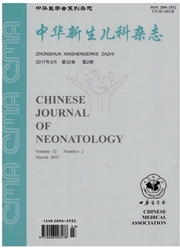

 中文摘要:
中文摘要:
目的探讨抑制配对免疫球蛋白B(PirB)的活性能否阻止由髓鞘抑制因子产生的神经再生抑制。方法采用动物体外实验,用出生2日龄SD新生大鼠脑组织行神经元细胞原代培养,进行缺氧缺血处理后,通过免疫组化及RT—PCR方法检查缺氧缺血损伤后神经元细胞内PirB含量的变化,观察加入抗PirB抗体后损伤神经元生长的恢复。结果与对照组相比,PirBmRNA和蛋白在大鼠缺氧缺血损伤组神经元细胞中表达均升高[(3.2±0.5)比(1.0±0.1),(2.5±0.3)比(1.2±0.1),P均〈0.05],加入PirB抗体后可促进缺氧缺血损伤神经元生长,轴突再生长度比未加入PirB抗体的缺氧缺血组增加[(298±43)μm比(198±48)μm,P〈0.05]。结论抑制PirB可能是促进缺氧缺血损伤神经再生新的治疗方法。
 英文摘要:
英文摘要:
Objective To study whether blocking paired immunoglobulin-like receptor B (PirB) activity can prevent inhibition of neuron regeneration by myelin inhibitors. Methods Brain tissues of 2 days old SD newborn rats were isolated and subjected to in vitro cortical neuron culture. Using immuno- histochemical and RT-PCR methods, PirB mRNA and protein expression levels in hypoxic-ischemic (HI) injured neurons were measured; and the effect of anti-PirB antibody treatment in axonal regeneration of HI damaged neurons was observed. Results PirB mRNA and protein expression were both increased in HI damaged rat cortical neurons when compared to the control group [ mRNA : (3.2 ±0. 5 ) vs. ( 1.0 ± 0. 1 ) ; Protein : (2.5 ± 0.3 ) vs. ( 1.2 ± 0. 1 ), P 〈 0. 05 ]. PirB antibody treatment successfully promoted HI damaged axonal regeneration. The regenerated axon length in the PirB antibody treatment group was increased when compared with the control HI group [ (298 ± 43 )μm vs. ( 198 ± 48 ) μm, P 〈 0. 05 ]. Conclusions Inhibition of PirB activity may be a potential therapeutic method to promote hypoxicischemic damaged axonal regeneration.
 同期刊论文项目
同期刊论文项目
 同项目期刊论文
同项目期刊论文
 期刊信息
期刊信息
